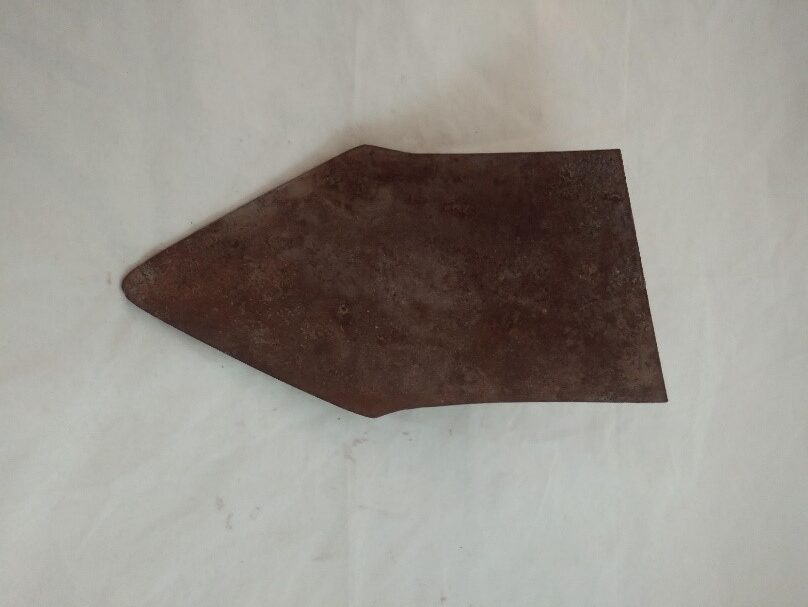Rose O’Neill was a famous Illustrator, cartoonist, artist, writer, and suffragette who kept a home in Walnut Shade, Missouri, known as Bonniebrook. These objects were excavated from the Bonniebrook property after the house burned down in 1947 and were later donated to the Rose O’Neill Historical Society upon the establishment of the Bonniebrook Museum. They are all functional objects made of metal, they were all made in the late 19th century or early 20th century, and they likely originated in the Ozarks region.
The wagon bench spring appears to have come from a relatively small wagon, as it is not large enough to be from a large buggy or wagon. This is half of a full wagon spring; there would have been another spring, and these would have been attached end to end to create an oval shape.
The railroad spike is large in comparison to spikes used today, and it has an irregularly shaped head, which is comparable to railroad spikes of the late 19th century. The spike could have been part of an actual railroad system, or it may have been collected by someone who brought it to the property. During the mid to late 19th century, the closest railroad would have been in Christian County, which is located an entire county north of Taney County, where the property is located.
The cultivator blade was likely part of a functional cultivator at some point. The manufacturer’s mark clearly indicates that the blade was the Star Manufacturing Company, which started out in Carpentersville, Illinois in 1864 forging and fixing steel tillage parts. The company went on to be chartered in 1873, and it soon became a lead producer of tillage implements. This piece would have been used in gardening or other agricultural activities.
The shaker grate likely came from a stove used in Rose O’Neill’s home or in an outer building, because it shows signs of heavy use. These kinds of grates could be found on wood and coal stoves or broilers of the time period, and they were made in this design so that one could shake the grate and the ashes would fall through.
The small metal bowl was likely used either in the home or in an outer building like a barn. It is coated in a graniteware enamel. Based on the corrosion and the missing bottom, the bowl might have been used for either cooking over a fire, which would eventually damage the bottom, or for holding water, which might eventually rust through the bottom.
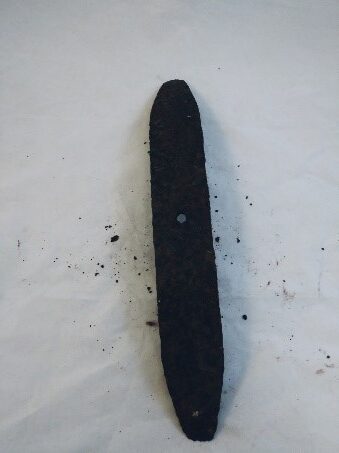
Wagon Bench Seat Spring
Midwest American culture
Late 19th/Early 20th century
Iron, L. 35.6 cm x W. 5 cm x H. 7 mm
Bonniebrook collection #2019.11
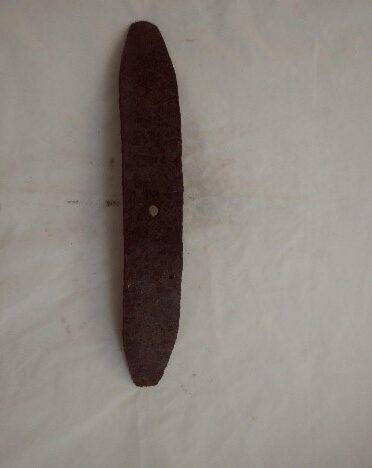
Wagon Bench Seat Spring
Midwest American culture
Late 19th/Early 20th century
Iron, L. 35.6 cm x W. 5 cm x H. 7 mm
Bonniebrook collection #2019.11
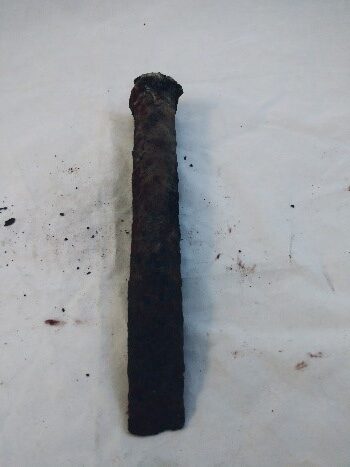
Railroad Spike
Midwest American culture
Late 19th/early 20th century
Iron, L. 24.8 cm x W. 4.5 cm x H. 4.6 cm
Bonniebrook collection #2019.10
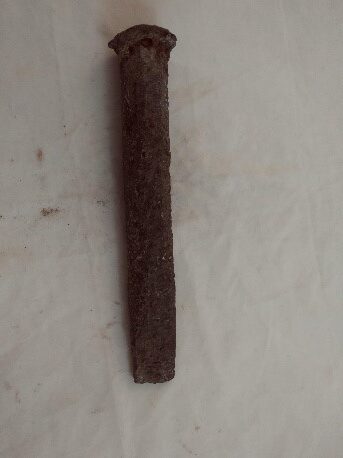
Railroad Spike
Midwest American culture
Late 19th/early 20th century
Iron, L. 24.8 cm x W. 4.5 cm x H. 4.6 cm
Bonniebrook collection #2019.10
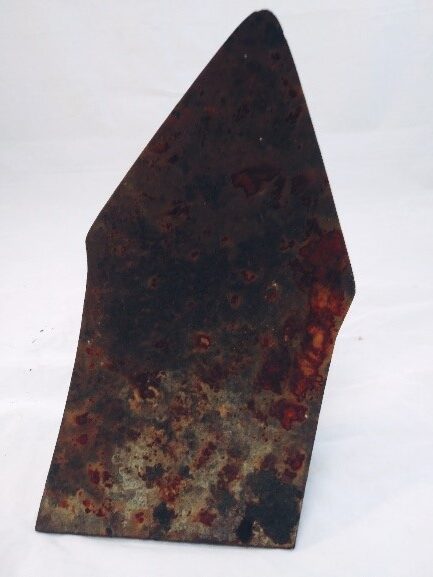
Cultivator blade
Midwest American culture
Late 19th/ early 20th century
Steel, L. 26.8 cm x W. 13.7 cm x H. 7.6 cm
Bonniebrook collection #2019.7a
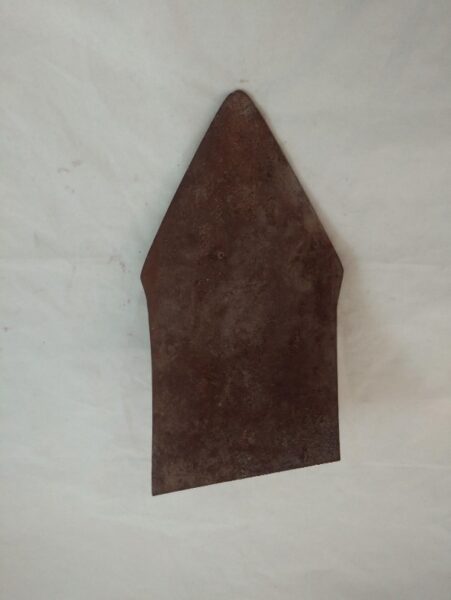
Cultivator blade
Midwest American culture
Late 19th/ early 20th century
Steel, L. 26.8 cm x W. 13.7 cm x H. 7.6 cm
Bonniebrook collection #2019.7a
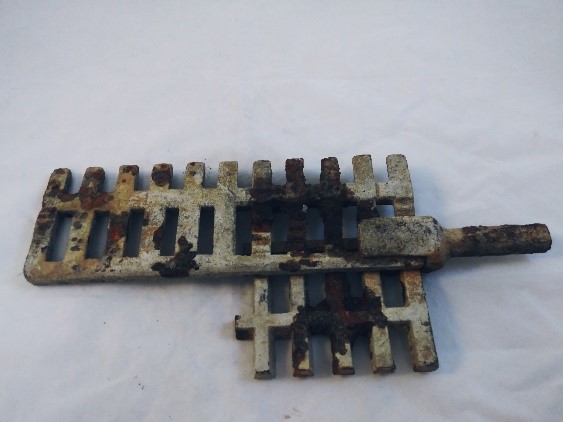
Shaker Grate
Midwest American Culture
Late 19th/Early 20th century
Iron, L. 34.3 cm x W. 15 cm x H. 3.8 cm
Bonniebrook collection #2019.8
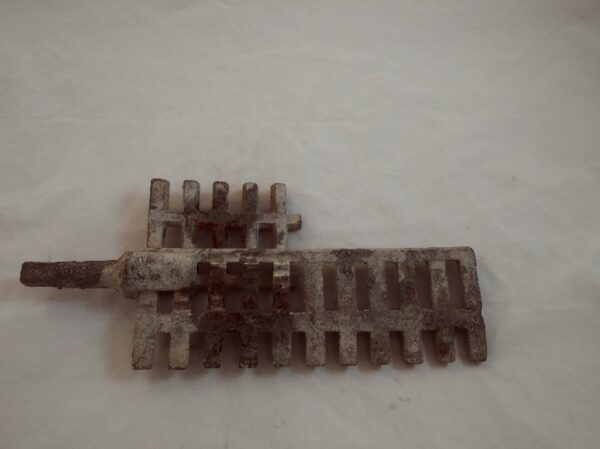
Shaker Grate
Midwest American Culture
Late 19th/Early 20th century
Iron, L. 34.3 cm x W. 15 cm x H. 3.8 cm
Bonniebrook collection #2019.8
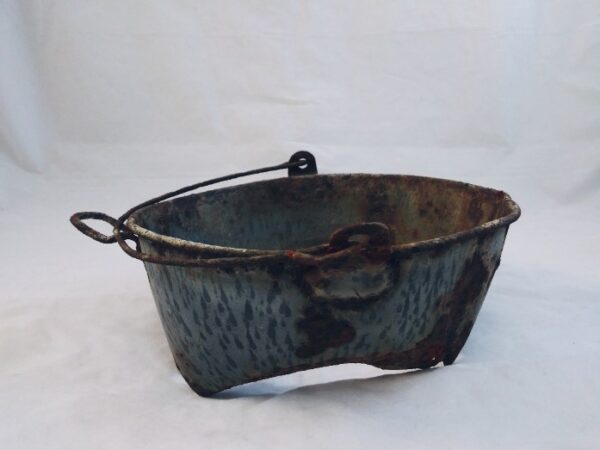
Small Metal Bowl
Midwest American culture
Late 19th/ early 20th century
Steel graniteware, L. 21 cm x W. 21 cm x H. 9 cm
Bonniebrook collection #2019.5
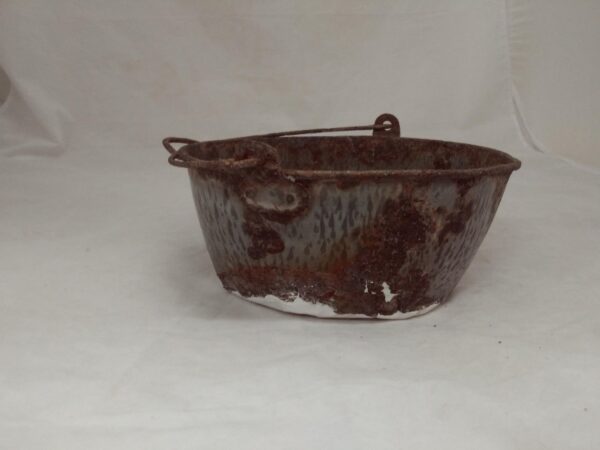
Small Metal Bowl
Midwest American culture
Late 19th/ early 20th century
Steel graniteware, L. 21 cm x W. 21 cm x H. 9 cm
Bonniebrook collection #2019.5
For more information, you may contact the researcher(s) noted in the title of this exhibit entry, or Dr. Billie Follensbee, the professor of the course, at BillieFollensbee@MissouriState.edu

